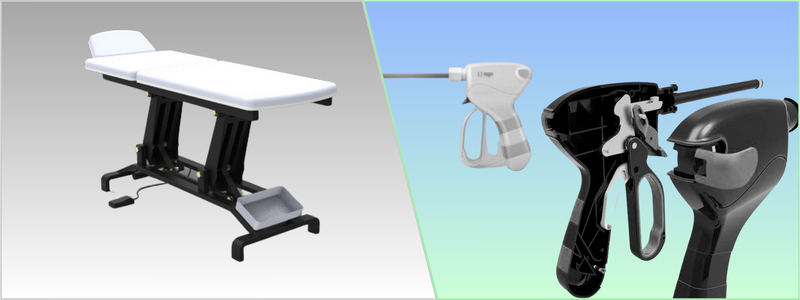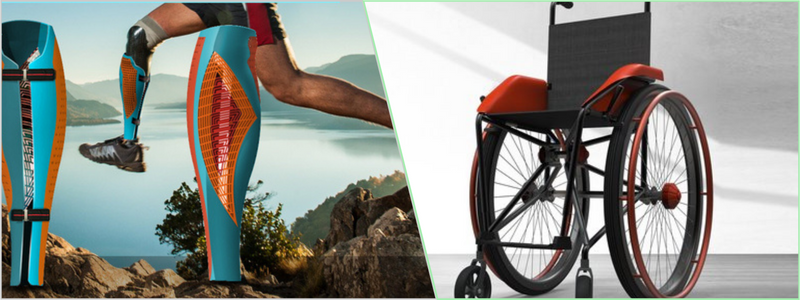Medical device design can involve any instrument intended by the manufacturer for a medical purpose. It might therefore include all sorts of apparatus, appliance, machine, implement, IVD (in vitro diagnostic) reagent, software, or related products utilized for the diagnosis, prevention, and treatment of medical conditions. Since the term encompasses a broad range of tools and equipment, the FDA (at least in the United States) categorizes medical devices design & development into three major groups based on the regulatory controls required for safety and efficacy as well as the risk to users/patients. The lower the class, the lower risk the device carries.
Class I:
The quickest type of device to acquire FDA approval, thanks to its non-invasive nature of usage. Many appliances you use on a daily basis are possibly Class I devices, such as surgical masks, latex gloves, tongue depressors, electric toothbrushes, and bandages. FDA approval for such devices can be completed within a week.
RELATED: How design firms use prototypes to develop critical new medical devices
Class II:
More than 40% of all medical devices in the market are categorized as Class II. The devices pose moderate risks to users, and thereby the manufacturing companies must provide evidence of their safety and efficacy through comparison with an already approved alternative. The average time to receive clearance for approval by FDA is nearly six months. Only 19% of all Class II devices submitted for approval are cleared within three months.
Class III:
The most invasive type of medical device and with the highest risk to users. Class III accounts for only about 10% of medical devices in the market and includes products like cochlear implants, pacemakers, and defibrillators. The average time for submission is just over eight months. According to the FDA, medical device classification largely depends on the manufacturers’ intended use. For example, a scalpel is generally used for cutting tissue and is categorized as Class I. Still, the classification may change if the manufacturer says the device is for eye surgery application.
RELATED: How to design medical products that people actually want
Cost of designing a medical device
According to a July 2020 report by StarFish Medical, the average development cost of a Class II medical device of medium complexity is between $2 and $5 million. Mind you, the amount is only for the research and development tasks; the total cost to get the product FDA-approved is around $30 million. Ethide Laboratories offers a little more detail, stating that about $24 million of the total development cost is spent on a range of works specified by the FDA.
The development of a medical device in the form of “software” is among the least expensive Class II category, with an average total cost of $3.2 million. On the other hand, a Class III medical device requires an average development cost of around $94 million from the concept phase to FDA approval. About $75 million of the amount is spent on FDA-required activities. Some of the most budget-demanding phases of the development are, in fact, FDA-dependent tasks, including obtaining an IDE, clinical study, and 501(k) approval.
An IDE (Investigational Device Exemption) is an application form in which the device maker/designer demonstrates the feasibility that the proposed investigation into the safety and efficacy of the design outweighs any potential human risk. The final process is the 501(k) premarket submission, which signifies that the device is safe and effective as an equivalent (already approved and legally marketed) alternative. Every company has a specific approach to the cost management of a medical device, but the numbers above are generally good reference points for future product development firms.
RELATED: New concept design costs, engineering prices & product development services rates

Clearance timing
Developing a new medical device and obtaining FDA approval for usage and sale are difficult tasks. Much like the exact development cost, the timeline will vary according to design complexity. For instance, there is a difference between the simplicity of surgical masks and urinary catheters (both are Class II medical devices).
The former may take the concept designer only months to design, prototype, test, and acquire market clearance; the latter may require more elaborate engineering and repeated clinical trials before acquiring FDA approval. The average development timing for a Class II medical device includes 20 months of concept and design, 12 months of clinical trials, and 40 months of 501(k) clearance.
Stages of medical device design development
A medical device design process typically goes through 10 steps as follows:
Concept and feasibility
A new invention design firm or biomedical engineers work with clients to determine the general description of the device. Apart from the desired functionality and usage, the phase should also pinpoint the balance between risks and benefits.
Specification development
Engineers dive deeper into the technical parameters, such as mechanical and electrical specifications. Some devices are quite basic (like a scalpel), and they only need relatively simple engineering considerations, while others are complex enough (such as an electric toothbrush) and require a combination of mechanical, electrical, and software configurations to work. An in-depth understanding between the device’s intended functions and structure is imperative as it leads to the choice of material, shape, and dimension.
RELATED: The faster, easier way to develop new medical devices
Design inputs
A medical device’s physical characteristics and functionality are the foundations of its design. Other design inputs that may be considered include safety, compatibility, packaging, sterilization, regulatory requirements, and environmental limits.
Design outputs
The results of all development efforts are compiled into design outputs reports. They may include risk analysis, diagrams, specification sheets, drawings, and user manuals. Please note that there isn’t any strictly linear relationship between design inputs and outputs. At the end of the day, the actual design output is the medical device itself.
Design review
Developing a medical device is an iterative process that involves continuous refinements. Design engineers conduct a thorough analysis of every aspect of the device against specific criteria such as durability, usability, safety, and consistency. There might be multiple reviews in a single device development. After each review, engineers correct mistakes until the design is finalized. Corrections can be done by adding features or removing redundancies.
RELATED: Designing new medical products & devices: a step-by-step guide for your company
Design verification
Verification’s main purpose is to ensure the device meets the initial design criteria, including specifications and regulatory compliance. Verification procedures can take many forms, such as clinical trials, stress tests, and simulations. According to the FDA, design verification is an examination to determine whether the device meets all the pre-specified requirements.
Design validation
Unlike the design verification process, which the company and regulatory bodies primarily conduct, validation focuses on end-users and the environment. It is an external review process, and as such, conducted by a third party to ensure independent verification and validation (IV&V), the gold standard in the medical device reviewing process.
Design transfer
Once the IV&V process is completed and the design is given the green light, the production facility (manufacturer or factory partner) takes over. Especially in medical device development, the design transfer comes with a checklist of standards for the manufacturer to maintain.

Design changes
Accompanying the transition is the design changes documentation. The engineering and design for assembly team certifies all the modifications made throughout the development process. At this point, the certification means that changes are documented, reviewed, validated, and approved.
DHF (Design history file)
All records relevant to the design history are compiled into the DHF report. It is the final design phase before the device is ready for production. DHF must be detailed enough to be used as a reference for future designs.
Note: DHF is an expanding document, constantly updated from the earliest design stage. Each development step ends with an addition to the history file.
RELATED: How 3D printed prosthetics are changing lives
Human factors
A big part of a medical device design approach is the “human factor engineering” intended to minimize risks and hazards related to normal usage. Some of the most easily observable outcomes of such engineering practice are as follows:
- User-friendly display interaction (device interface)
- Easy maintenance and repair
- Safe/secure connection between one device and other components
- Minimized risk of adverse events
- Effective alerts or alarm management
- Improved device controls and understanding of the operational status
- Accurate and human-readable diagnostics
Last, human factor engineering aims to reduce the need for user training and over-reliance on instruction manuals.
Optional certifications
In addition to the FDA’s safety and efficacy standards, manufacturers may also want to acquire international safety certifications issued by ISO. There are at least two types of certifications relevant to medical devices:
- ISO 14971: a certification of risk management in a medical device. It implies that the manufacturer has taken the necessary precautions to minimize the risk typically associated with the normal use of the device. In other words, ISO 14971 certification states how the device’s potential benefits outweigh the risks.
- ISO 13485: the certification is not for the device but for the manufacturer or laboratory. ISO 13485 clarifies that an organization or facility meets the international quality management system standards to provide medical services. The certification concerns the manufacturing of hardware devices and the installation, maintenance, and related services.
While ISO certifications are not mandatory, companies use them to boost their reputation and gain a competitive advantage.
How Cad Crowd can help
If you need help designing and developing customized medical devices, contact us here at Cad Crowd and get a free quote. It’s free and doesn’t come with any obligation; it’s simply a way to understand how we can assist you and provide you with the best possible services. We’ll analyze your project and connect you with one of our top-tier design freelancers whose skills and experience match your requirements.
